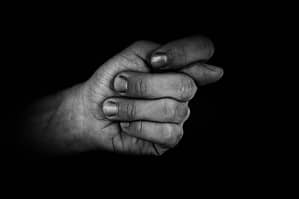6 Myths About IBD
Michelle Pickens’ Struggle: A Journey to Diagnosis
Michelle Pickens’ battle with inflammatory bowel disease (IBD) began during her college years. Despite debilitating symptoms such as vomiting, frequent nausea, abdominal pain, diarrhea, and constipation, her concerns were dismissed by three different doctors as mere stress. It wasn’t until she underwent a unique test—a pill-sized camera swallow—that the hidden inflammation in her bowel was revealed, leading to a diagnosis of Crohn’s disease.

Understanding Inflammatory Bowel Disease (IBD)
IBD, a chronic condition causing inflammation in the intestinal tract, comes in two forms: Crohn’s disease and ulcerative colitis (UC). Dr. Florian Rieder, a gastroenterology expert, explains that IBD’s origins involve a complex interplay of genetic, environmental, and lifestyle factors, leading the immune system to mistakenly attack healthy gut tissue.
Debunking Myths Surrounding IBD
1. Myth: IBD and IBS are the same thing.
Fact: Despite similar acronyms and overlapping symptoms, IBS (irritable bowel syndrome) and IBD are distinct conditions. IBD involves inflammation and potential long-term damage, while IBS is a set of symptoms without causing bodily harm.
2. Myth: IBD only affects the gut.
Fact: IBD can extend beyond the gut, impacting joints, bones, kidneys, liver, eyes, and skin. These extraintestinal issues may be the first indicators of IBD or signal the need for treatment adjustments.
3. Myth: Diet is a permanent fix for IBD.
Fact: Contrary to popular belief, specific diets are not a cure for IBD. While certain foods may trigger symptoms, no definitive diet has been proven to cure or consistently reduce inflammation in IBD.
4. Myth: Only adults get IBD.
Fact: While commonly diagnosed between ages 15 to 40, IBD can affect individuals of any age, including children. Early-onset cases tend to be more aggressive and severe.
5. Myth: Surgery is a cure.
Fact: Surgery can be crucial for symptom relief, but it doesn’t cure IBD. Both Crohn’s and ulcerative colitis may reoccur post-surgery, necessitating ongoing medication to manage the underlying disease.
6. Myth: Very little can be done.
Fact: IBD is not an irreversible sentence of suffering. Numerous therapeutic options exist to improve patients’ quality of life, reduce inflammation, and minimize complications.
Treatment Approaches for IBD
Effective IBD treatment often involves a combination of medications and, in some cases, surgery. Medication options include biologics and small molecules, each with its own set of considerations and potential side effects.
Living with IBD: Real Stories of Resilience
Despite the challenges posed by IBD, individuals like Sneha Dave and Michelle Pickens lead fulfilling lives. Dave, diagnosed with ulcerative colitis at a young age, emphasizes the importance of advocacy and support for those living with chronic conditions. Pickens, a Crohn’s patient, shares her journey as “Crohnically Blonde,” aiming to connect with others and break the stigma associated with IBD.
In conclusion, dispelling myths, understanding the complexities of IBD, and embracing a comprehensive approach to treatment can significantly impact the lives of those affected by this chronic condition.


Average Rating